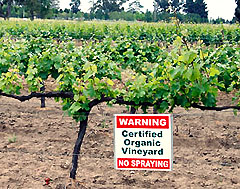 What would I have to eliminate in my wine kit (Cabernet Sauvignon ) to get close to an organic wine without sacrifice taste.
What would I have to eliminate in my wine kit (Cabernet Sauvignon ) to get close to an organic wine without sacrifice taste.
Thank you, Daniel
Name: Daniel B.
State: FL
Hello Daniel,
The whole idea behind organic wine is to grow the grapes without the use of pesticides or other manmade interferences — to keep the growth of the grapes as natural a possible. Unfortunately, we have never seen this type of packaged product made available to the home wine making market.
Most “organic” wines on the market contain sulfites, just like the potassium metabisulfite you will find in the wine ingredient kits we offer., but there are a handful of wineries that do not add sulfites to there wines out of principal.
The reason most organic wineries add sulfites is because the risk of spoilage is so high when they are not. Extreme care has to be taken to insure that the wine is not exposed to airborne contaminants, etc. Everything that come in contact with the wine has to be sanitized to a very high standard. All this takes time and money, and if spoilage does occur, it is usually the entire batch that is lost, not just some. A vineyard can only provide one harvest per year.
For the home winemaker, keeping spoilage from occurring is even harder than it is for the wineries. This is because the smaller batch size that most home winemakers are dealing with. A smaller batch has more surface contact with equipment on a per gallon then a large batch. This is just laws a physics. This extra surface contact per gallon increases the risk of spoilage proportionally. This is why it is so important for the home winemaker to use sulfites in their wine just has 99% of the commercial wineries do.
So to answer your question, regardless of what you leave out of the wine it still would not be consider “organic”, and to leave out the potassium metabisulfite is not practical anyway for the home winemaker.
I hope this helps you out.
Happy Winemaking,
Ed Kraus
———————————————————————————————————
Ed Kraus is a 3rd generation home brewer/winemaker and has been an owner of E. C. Kraus since 1999. He has been helping individuals make better wine and beer for over 25 years.
Category Archives: Q&A
How Can I Make My Wine Sweeter?
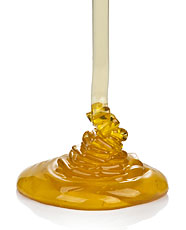 I have used 3 fruit base kits and keep getting a very dry high alcohol content wine. How can I make my wine sweeter.
I have used 3 fruit base kits and keep getting a very dry high alcohol content wine. How can I make my wine sweeter.
Name: Jerrie C.
State: AR
Hello Jerrie,
If you are getting more alcohol than you like in your wines, then you might want to use a wine hydrometer to start controlling your alcohol level. By using the wine hydrometer you can determine how much sugar you need to add to a wine must to get the final alcohol level you want. This assumes that all of the sugar will go towards the alcohol during the fermentation leaving you with a dry wine.
Once the fermentation has completed and the wine has had plenty of time to clear, that is the time to adjust the wines sweetness if desired. Add sugar to taste. It is important to understand that the wine needs plenty of time to clear before sweetening.
We recommend making a sugar syrup comprised of 1 part sugar and 1-2 parts water. Heat on the stove until it the syrup turns clear, and then allow to cool.
Once you have the wine to the sweetness you like it is important that you also add Potassium Sorbate. This is a wine stabilizer that will help to keep your wine from starting a re-fermentation with the new sugars.
To sum up, the sugar you are adding at the beginning of fermentation with the aid of a hydrometer is all contributing to the wine’s alcohol level. The sugar you add after fermentation is contributing to the wine’s sweetness. By handling it in this way, you have complete control of both aspects of your wine.
Happy Wine Making,
Ed Kraus
———————————————————————————————————
Ed Kraus is a 3rd generation home brewer/winemaker and has been an owner of E. C. Kraus since 1999. He has been helping individuals make better wine and beer for over 25 years.
How Do You Recycle Synthetic Corks?
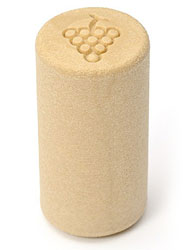 You said “Finally, synthetic corks are recyclable”. Question is how do I recycle corks? Do they go in with recyclables like plastic bottles?
You said “Finally, synthetic corks are recyclable”. Question is how do I recycle corks? Do they go in with recyclables like plastic bottles?
Sal
Name: Sal Runfola
State: NJ
Hello Sal,
Synthetic corks are not marked with a recyling number, but they are made of #7 plastic. Any recycling center that takes this plastic should be able to handle them just fine. If you are having trouble finding a location, go to https://search.earth911.com/ Type in “#7 Plastic Bottle” and your zipcode to find a location near you.
Happy Winemaking,
Ed Kraus
———————————————————————————————————
Ed Kraus is a 3rd generation home brewer/winemaker and has been an owner of E. C. Kraus since 1999. He has been helping individuals make better wine and beer for over 25 years.
My Wine Exploded!
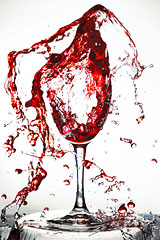 I racked my wine after sweetening it back let it set for a week to make sure the fermenting had stopped, took my reading which was ok. bottled it, and in about a week it started to explode. I’ve been making wine for 8 years and this is the first time this has happen. What caused this to occur?
I racked my wine after sweetening it back let it set for a week to make sure the fermenting had stopped, took my reading which was ok. bottled it, and in about a week it started to explode. I’ve been making wine for 8 years and this is the first time this has happen. What caused this to occur?
Name: Barbara E.
State: MS
Hello Barbara,
What has happened is somewhat straight-forward. The most common reason for a fermentation to stop is because it ran out of sugar to ferment. The fermentation is all about taking wine yeast consuming the sugars and converting them into alcohol and CO2 gas. If you add more sugar back to the wine, for whatever reason, the fermentation can start up again.
It only takes the slightest amount of fermentation to create a lot of CO2 gas and pressure. The pressure builds up and either pops the cork, or what happens in the case of screw-cap bottles, the bottle fails. This is what happened in your cause. The fact that you have not had this problem before in 8 years I find remarkable.
For future batches you can do just as you have done before. That is: let the fermentation complete and clear; then add sugar to taste at bottling time. But before bottling also add Potassium Sorbate. This is a wine stabilizer that will help keep the wine from re-fermenting. It is also important that the wine be given plenty of time to drop out all the inactive wine yeast after the fermentation before you sweeten and bottle. This will also help to keep a re-fermentation out of your future.
Best Wishes,
Ed Kraus
———————————————————————————————————
Ed Kraus is a 3rd generation home brewer/winemaker and has been an owner of E. C. Kraus since 1999. He has been helping individuals make better wine and beer for over 25 years.
What's Going On With My Wine Making Kit?
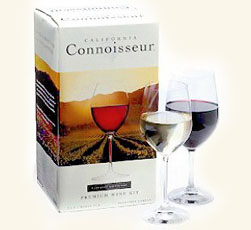 I just made 30 bottles of Cabernet Sauvignon California Connoisseur. I did all what the instructions said for the 28 days. The target was ok at 0.995 at the end. I omitted packets #4 and #5 (potassium Sorbate & Fining Agent ) My question is, my wine seems to be a little light to the taste, but letting it rest after opening did give it more body. Also laying the bottles on its side shows some sediment inside the bottle yet it was clear when I bottled it. What did I do wrong ?
I just made 30 bottles of Cabernet Sauvignon California Connoisseur. I did all what the instructions said for the 28 days. The target was ok at 0.995 at the end. I omitted packets #4 and #5 (potassium Sorbate & Fining Agent ) My question is, my wine seems to be a little light to the taste, but letting it rest after opening did give it more body. Also laying the bottles on its side shows some sediment inside the bottle yet it was clear when I bottled it. What did I do wrong ?
Name: Daniel B.
State: FL
Hello Daniel,
A wine having a light flavor is typically a symptom of trying to drive the alcohol level up with more sugar. This will bring the wine out of balance giving it a watery impression. When you let a wine sit open for a few minutes before drinking, as you did, it allows time for the aromas or bouquet to develop and release. This is done quite often with some wine, particularly red wines. The addition of these aromas will give the impression that the wine has more flavor.
As to having sediment in the wine bottles, this is a direct result of not adding the fining agent as you had indicated. It is very common for a newly made wine to look visually clear before it is actually done clearing. That is why a “fining agent” provided with these kits — to drop out what you can’t see.
Happy Winemaking,
Ed Kraus
———————————————————————————————————
Ed Kraus is a 3rd generation home brewer/winemaker and has been an owner of E. C. Kraus since 1999. He has been helping individuals make better wine and beer for over 25 years.
Can I Combine two 10 Liter Wine Kits?
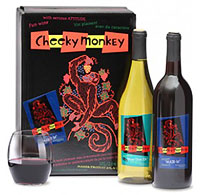 Can l combine two 10 liter wine kits (cab.franc) to one single batch; l do not want to dilute the juice with too much water. Will this work ?
Can l combine two 10 liter wine kits (cab.franc) to one single batch; l do not want to dilute the juice with too much water. Will this work ?
Your answer would indeed be very appreciative.
Name: Richard
State: California
Hello Richard,
The answer to your question is no. The issue is the acid in the juice. Your wine would have double the acidity making is very sharp tasting. I strongly suggest that you only use one wine making kit per 6 gallons. You will be very surprised at the amount of body and flavor your wine will have when using these wine making kits in this way.
Thank you for your question,
Ed Kraus
———————————————————————————————————
Ed Kraus is a 3rd generation home brewer/winemaker and has been an owner of E. C. Kraus since 1999. He has been helping individuals make better wine and beer for over 25 years.
My Watermelon Wine Keeps Fermenting
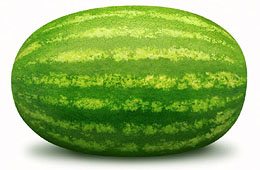 I have a batch of watermelon wine that seems to keep on working. It seems there is no end to its fermentation. Should I add campden tablets to make it stop or do I just wait?
I have a batch of watermelon wine that seems to keep on working. It seems there is no end to its fermentation. Should I add campden tablets to make it stop or do I just wait?
Name: Bill P.
State: Connecticut
Bill,
It sounds like you have a stalled fermentation — one that just won’t get up and get going. I would suggest the you go over the “Top 10 Reasons For Fermentation Failure” that are listed on our website. See which on of these 10 reasons fits your scenario. We have found that these 10 reasons cover 95% of the issues we run across. Once you know what the problem is you can fix it and allow the fermentation to finish more quickly.
As far as adding Campden Tablets, I would strongly recommend against using it at this point in the wine making process. Campden Tablets are not that effective at stopping a fermentation. They will give the fermentation activity a “punch in the gut”, then the fermentation will typically pick up again, just enough to be annoying. You are much better off letting the fermentation finish then add the Campden Tablets once the wine clears.
Best Wishes,
Ed Kraus
———————————————————————————————————
Ed Kraus is a 3rd generation home brewer/winemaker and has been an owner of E. C. Kraus since 1999. He has been helping individuals make better wine and beer for over 25 years.
When is the Best Time to Drink Red Wine from a Kit?
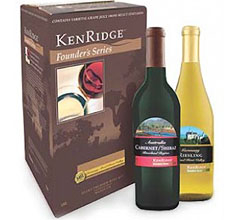 For the past year a group of us have been making red wine from kits. We began with a Tempranillo in May. Next we made a Super Tuscan which we bottled in Sept. This was followed by a Zinfandel which we bottled in Nov. In Dec. we will bottle a Syrah and an Amarone. Most of the kits say that these fines are good to drink in 3 months. Will these kit wines improve with age? Can any go a year or 2? How can we tell when they are mature? Will they all be different?
For the past year a group of us have been making red wine from kits. We began with a Tempranillo in May. Next we made a Super Tuscan which we bottled in Sept. This was followed by a Zinfandel which we bottled in Nov. In Dec. we will bottle a Syrah and an Amarone. Most of the kits say that these fines are good to drink in 3 months. Will these kit wines improve with age? Can any go a year or 2? How can we tell when they are mature? Will they all be different?
Name: Charlie J.
State: PA
Hello Charlie,
It depends on the wine making kit, and to some degree, the type of red wine. In general, the fuller or heavier the wine, the more it will take advantage of aging and the longer it will take to reach its full potential.
Most all wines will mature or improve with time, but some need more time than others. Once they reach maturity they then will typically plateau in quality for a period of time. This could be for a couple of years, some maybe 5 years. Then the wine will start to slowly degrade. This is something that happens very slowly over many years, not months. The point is once a wine reaches this plateau there is no “reason” to wait longer to drink the wine. This is no different than wines you would by commercially.
You may want to take a look at the blog post, “The Importance Of Aging Your Wine“. In this blog post, there is an aging chart for most of the brands we offer. You may want to use this a general guide.
Happy Winemaking,
Ed Kraus
———————————————————————————————————
Ed Kraus is a 3rd generation home brewer/winemaker and has been an owner of E. C. Kraus since 1999. He has been helping individuals make better wine and beer for over 25 years.
Tell Me More About This Airlock Thing You Mentioned
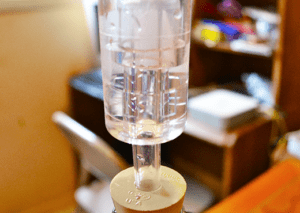 Hi:
Hi:
I have always made my wine in a humongous stone crock. What is an airlock thing that is mentioned? My wine is really good, and I’ve never gotten sick from it. Nobody else has either. So would that airlock thing make my wine better??? By the way, I make Elderberry and Choke Cherry wine.
Thanks, Lois
—–
Hello Lois,
I’m glad you brought this up. Many people misunderstand the role airlocks play in home winemaking. Now is just as good as time as any to clear things up.
An airlock is basically a water trap that you attach to the neck of a jug with the aid of a rubber stopper. It cannot be attached to an open vessel such as the stone crock you are using. It needs a neck of some kind. You put the rubber stopper in the opening and then insert the airlock into a hole that is in the rubber stopper.
You fill the airlock halfway with water. As the gas comes off the fermentation, it bubbles through the water within the airlock and then out of the container. At the same time this water keeps outside contaminants and bugs from getting into the wine. This helps keep the wine free from spoilage.
The first thing I would like to point out about an airlock is that it has nothing to do with the quality of the wine you make. It will not make a good wine great or an average wine good. It does nothing of the kind.
What an airlock does is reduce your chances of having a wine spoil. It keeps your wine protected from infection during and after the fermentation. It does so by creating this barrier between the fermentation and airborne molds and bacteria. Allowing these little nasties to get into your wine and then giving them a chance to grow is the essence of spoilage.
If the wine is fermenting and foaming like it normally should, all these foreign intruders do not really have a chance to take over a wine. There is CO2 gas coming off the fermentation, keeping fallout from landing directly into your wine must.
So just getting to the wine is a big challenge for these little spoilers. But beyond this, if they are able to get into the wine, having an opportunity to grow is very slim for them. All the yeast activity from the fermentation keeps them in their place and even destroys them in most cases.
What all this means for you, Lois, is that using your stone crock for fermenting your wine is fine up to this point. The wine is fermenting strong and spoilage is close to impossible during this time.
It is when the fermentation begins to slow down that you could have some issues with spoilage. Fermentations do not typically stop all at once. They usually taper off over the course of a few days. As the fermentation becomes less and less active, the window of opportunity becomes larger and larger for contaminants to get to the wine and spoil it. It is in this context that the airlock becomes valuable and in my view a necessity.
Happy Wine Making
Customer Service
———————————————————————————————————
Ed Kraus is a 3rd generation home brewer/winemaker and has been an owner of E. C. Kraus since 1999. He has been helping individuals make better wine and beer for over 25 years.
It's Day 8. Shouldn't My Wine Be Fermenting?
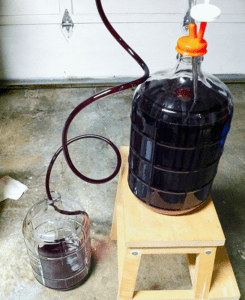 Hi:
Hi:
Today is day 8 and I just transferred my wine from the plastic fermenter to a glass carboy like the homemade wine instructions say to do. I do not see the wine brewing at all. Shouldn’t the wine still be fermenting? Do I have a problem?
Please help!
Robert
—–
Hello Robert.
I am going to assume that you are making your wine from a wine ingredient kit such as our European Select or KenRidge Classic since you mentioned “day 8” much like their directions would.
How fast your fermentation goes can vary. On average, the fermentation should almost be done, if not done completely, by day 8. But sometimes a fermentation will go faster or slower than the wine making directions anticipated. This is normally due to the environmental conditions of the fermentation, such as: the temperature of the wine must, the nutrients in the water you used, etc.
Regardless of how fast your wine must is fermenting, the important thing to know at this point is that it is either still fermenting, or it has completed the fermentation. Luckily for you this can be easily be determined by taking a reading with a wine hydrometer. Hopefully you have one. If you do not, order one today.
A wine hydrometer is very easy to uses. It’s a glass tube with a weight at one end. You simply put it into your wine must and see how high or low it floats. It has no moving parts. Nothing goes up and down inside of the wine hydrometer like a thermometer does. It just floats. Wherever the surface of the wine crosses the scale on the wine hydrometer, that’s your reading. This is why sometimes it is referred to as a gravity hydrometer.
If the wine hydrometer reads .998 or less on the S.G. scale (Specific Gravity), this means that your wine is no longer fermenting because it is done with the fermentation. If the reading is above the .998 this means that the fermentation still has a little more work to do.
If you are seeing absolutely no activity with a wine hydrometer reading above .998, it would be much to your advantage to go over the Top 10 Reasons For Fermentation Failure. This article will provide you with wine making tips that will help you get your fermentation back on track.
If the fermentation is done, continue on with the homemade wine instructions you have. Do not speed up the timetable of the directions. Follow the original schedule.
Happy Wine Making,
Customer Service at E. C. Kraus
———————————————————————————————————
Ed Kraus is a 3rd generation home brewer/winemaker and has been an owner of E. C. Kraus since 1999. He has been helping individuals make better wine and beer for over 25 years.
